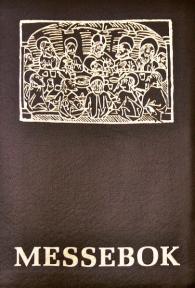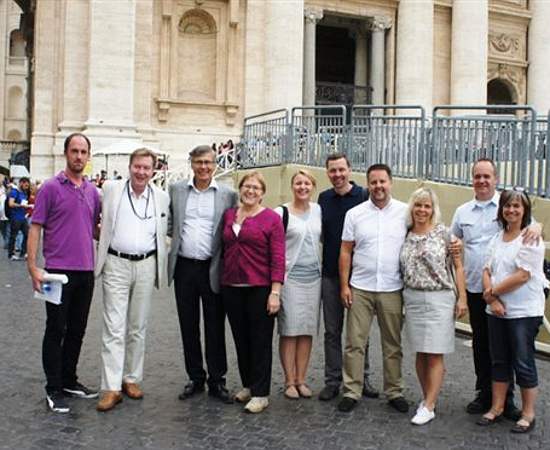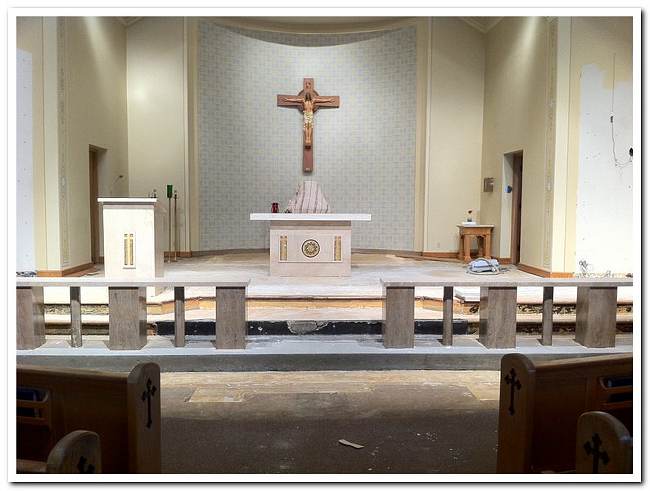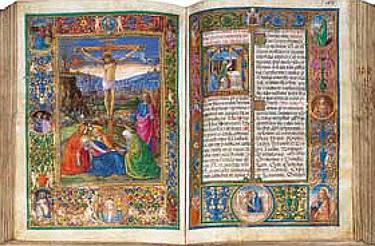Sandro Magister nevnte i en artikkel for noen få dager siden seks ulike ting (for det meste bøker) som diskuterer Vatikankonsilet – bare i Italia. Denne voldsomme interessen og diskusjonen rundt konsilet ser ut til å være tydeligst i Italia, men det er all grunn til å tro at den vil spre seg til resten av verden om ikke lenge. Her er magisters liste (les hele hans artikkel her):
The controversy over the interpretation of Vatican Council II and the changes in the magisterium of the Church has in recent weeks registered new developments, including at the top level.
The first is the «Doctrinal Preamble» that the congregation for the doctrine of the faith delivered last September 14 to the Lefebvrists of the schismatic Priestly Fraternity of St. Pius X, as a basis for reconciliation. …
A second development is the participation of Cardinal Georges Cottier in the discussion that has been underway for several months on www.chiesa and on «Settimo cielo.»
Cottier, 89, Swiss, a member of the Dominican order, is theologian emeritus of the pontifical household. He published his contribution in the latest issue of the international magazine «30 Days.» In it, he replies to the theses upheld on www.chiesa by the historian Enrico Morini, according to whom the Church intended to use Vatican Council II to reattach itself to the tradition of the first millennium. Cardinal Cottier warns against the idea that the second millennium was a period of decline and departure from the Gospel for the Church. …
A third development of the discussion regards a thesis of Vatican II that is particularly contested by the traditionalists: that of religious freedom. In effect, there is an unquestionable rupture between the statements in this regard from Vatican II and the previous condemnations of liberalism made by the popes of the nineteenth century.
But «behind those condemnations there was in reality a specific form of liberalism, that of continental statism, with its claims of monistic and absolute sovereignty that were seen as limiting the independence necessary for the mission of the Church.»
While instead «the practical reconciliation brought to completion by Vatican II took place through the pluralism of another liberal model, the Anglo-Saxon one, which radically relativizes the claims of the state to the point of making it not the monopolist of the common good, but a limited reality of public offices at the service of the community. The clash between two exclusive models was followed by encounter under the banner of pluralism.» …
A fourth development is the release of this book in Italy: Pietro Cantoni, «Riforma nella continuità. Vaticano II e anticonciliarismo», Sugarco Edizioni, Milano, 2011.
The book reviews the most controversial texts of Vatican Council II, to demonstrate that they can all be read and explained in the light of the tradition and the grand theology of the Church, including Saint Thomas.
The author, Fr. Pietro Cantoni – after spending a few years as a young man in the Lefebvrist community of Ecône in Switzerland – was educated in Rome at the feet of one of the greatest masters of Thomistic theology, Monsignor Brunero Gherardini. …
Another new development is the Acqui Storia prize that will be awarded next October 22 to Roberto de Mattei for the volume «Il Concilio Vaticano II. Una storia mai scritta [Vatican Council II. A history never written],» published by Lindau and covered by www.chiesa at its publication.
The Acqui prize is one of the most prestigious in the field of historical studies. The jury that decided to award it to de Mattei is made up of scholars of various perspectives, Catholics and non-Catholics. Their president, however, Professor Guido Pescosolido of the University of Rome «La Sapienza,» resigned from his position precisely in order to dissociate himself from this decision. …
Finally, also in the interpretive vein of Monsignor Gherardini and Professor de Mattei, another book was released in Italy on October 7 that identifies in Vatican Council II itself the problems that would come to light in the postcouncil:
Alessandro Gnocchi, Mario Palmaro, «La Bella addormentata. Perché col Vaticano II la Chiesa è entrata in crisi. Perché si risveglierà [Sleeping beauty. Why with Vatican Council II the Church entered into crisis. Why it will reawaken]», Vallecchi, Firenze, 2011. ….

 Det er blitt skrevet en del her på bloggen i det siste om de norske oversettelsene som brukes i katolsk liturgi i Norge. I den forbindelse kan jeg nevne at den katolske (søndags-)messeboken som har vært utsolgt i noen år, nå (snart) er tilgjengelig i ny utgave – til kr 389. Slik skriver
Det er blitt skrevet en del her på bloggen i det siste om de norske oversettelsene som brukes i katolsk liturgi i Norge. I den forbindelse kan jeg nevne at den katolske (søndags-)messeboken som har vært utsolgt i noen år, nå (snart) er tilgjengelig i ny utgave – til kr 389. Slik skriver 



